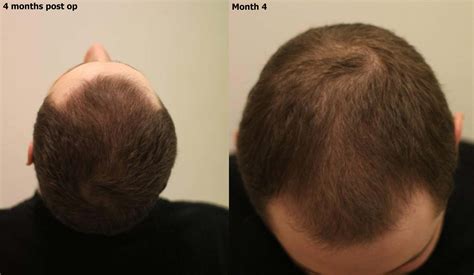Hair Loss: A Prevalent Issue
Hair loss affects over 85% of men, with androgenetic alopecia being the most common cause. By the age of 35, 66% of men experience some degree of balding.

Hair Replacement Options
With advancements in hair restoration techniques, several effective options are available for men:
1. Finasteride (Propecia)
- An oral medication that inhibits dihydrotestosterone (DHT), a hormone that contributes to hair loss.
- Can slow down hair loss and promote regrowth in up to 76% of men.
2. Minoxidil (Rogaine)
- A topical medication that stimulates hair follicles.
- Can help to slow down hair loss and produce new hair growth in 40-60% of men.
3. Low-Level Laser Therapy (LLLT)
- Uses low-level lasers to stimulate hair follicles and enhance blood flow to the scalp.
- Can potentially reduce hair shedding and promote hair growth.
4. Platelet-Rich Plasma (PRP) Therapy
- Involves injecting the patient’s own concentrated platelets into the scalp.
- Platelets contain growth factors that can stimulate hair follicles and improve scalp health.
5. Hair Transplantation
- The surgical removal of hair follicles from a donor area (usually the back of the scalp) and transplanting them to bald or thinning areas.
- Provides natural-looking, permanent results.
Innovative Therapy: NeoGenesis with Stemoxidation**
NeoGenesis with Stemoxidation is an emerging hair restoration therapy that utilizes stem cell technology. It stimulates hair follicle stem cells to promote hair growth and regeneration.
Effective Strategies
- Early Intervention: Seek treatment as soon as you notice signs of hair loss to prevent further progression.
- Combining Therapies: Combine different hair restoration techniques to maximize effectiveness.
- Healthy Lifestyle: Maintain a balanced diet, exercise regularly, and reduce stress, as these factors can impact hair health.
Common Mistakes to Avoid
- Ignoring the Underlying Cause: Determine the root cause of hair loss to address it effectively.
- Expecting Quick Results: Hair restoration takes time and requires patience.
- Using Ineffective Products: Avoid products that promise miraculous results but lack scientific evidence.
- Delaying Treatment: Prolonged hair loss can lead to irreversible damage to hair follicles.
Tables
Table 1: Prevalence of Hair Loss
| Age Group | Percentage of Men with Hair Loss |
|---|---|
| 18-29 | 16% |
| 30-39 | 35% |
| 40-49 | 50% |
| 50-59 | 66% |
| 60-69 | 77% |
Table 2: Effectiveness of Hair Restoration Therapies
| Therapy | Success Rate |
|---|---|
| Finasteride | 76% |
| Minoxidil | 40-60% |
| LLLT | 30-50% |
| PRP | 40-70% |
| Hair Transplantation | 90-95% |
Table 3: Comparison of Hair Restoration Therapies
| Therapy | Mechanism of Action | Advantages | Disadvantages |
|---|---|---|---|
| Finasteride | Blocks DHT production | Oral medication | Requires long-term use |
| Minoxidil | Stimulates hair follicles | Topical application | Can cause scalp irritation |
| LLLT | Enhances blood flow and follicle stimulation | Non-invasive | Limited efficacy |
| PRP | Injects growth factors | Stimulates hair growth | Requires multiple treatments |
| Hair Transplantation | Transplants hair follicles | Permanent results | Surgical procedure |
Table 4: NeoGenesis with Stemoxidation Therapy
| Component | Mechanism of Action |
|---|---|
| Stem cells | Promote hair follicle stem cell regeneration |
| Growth factors | Encourage hair growth and follicle health |
| Antioxidants | Protect against oxidative damage |
